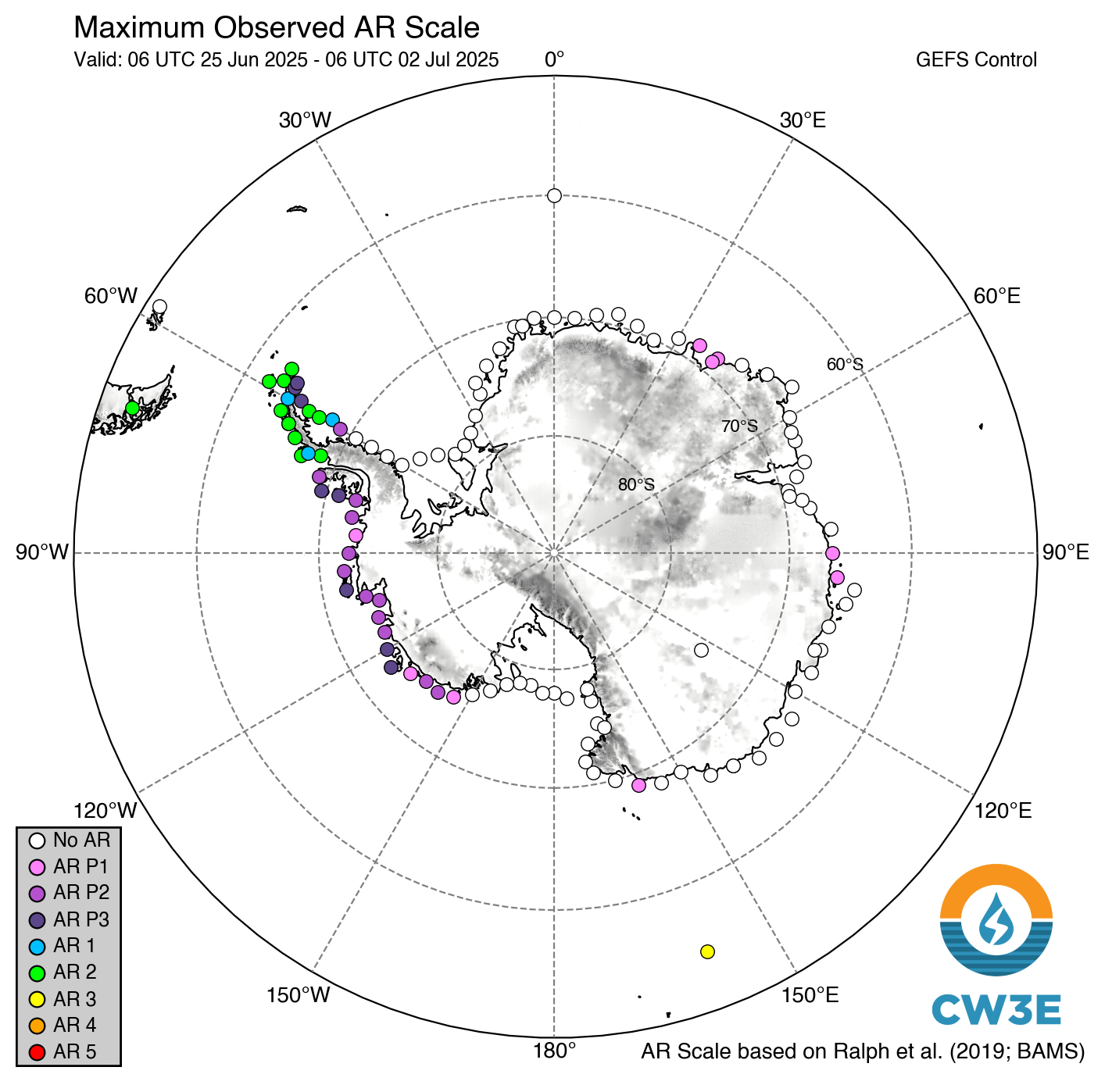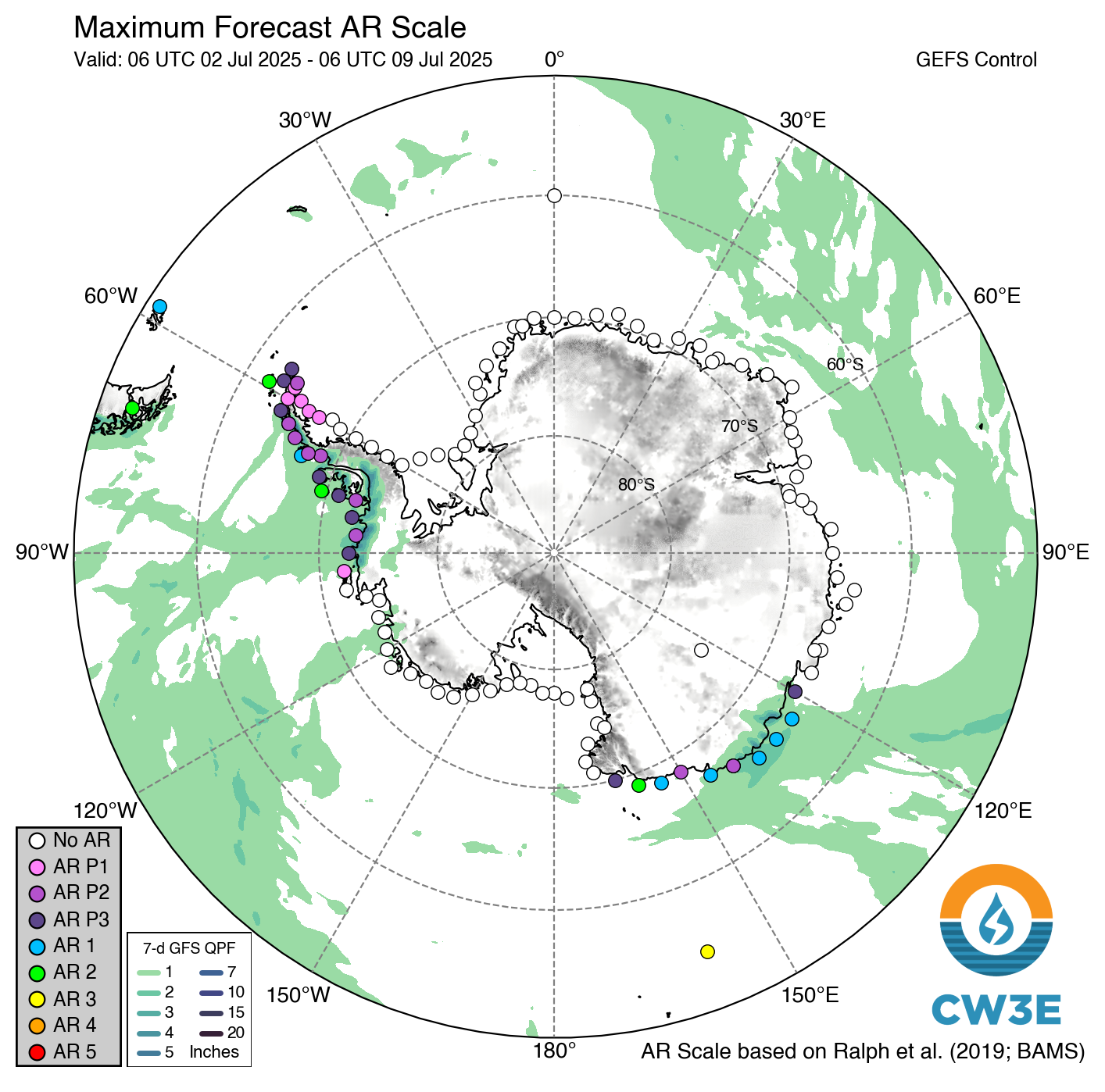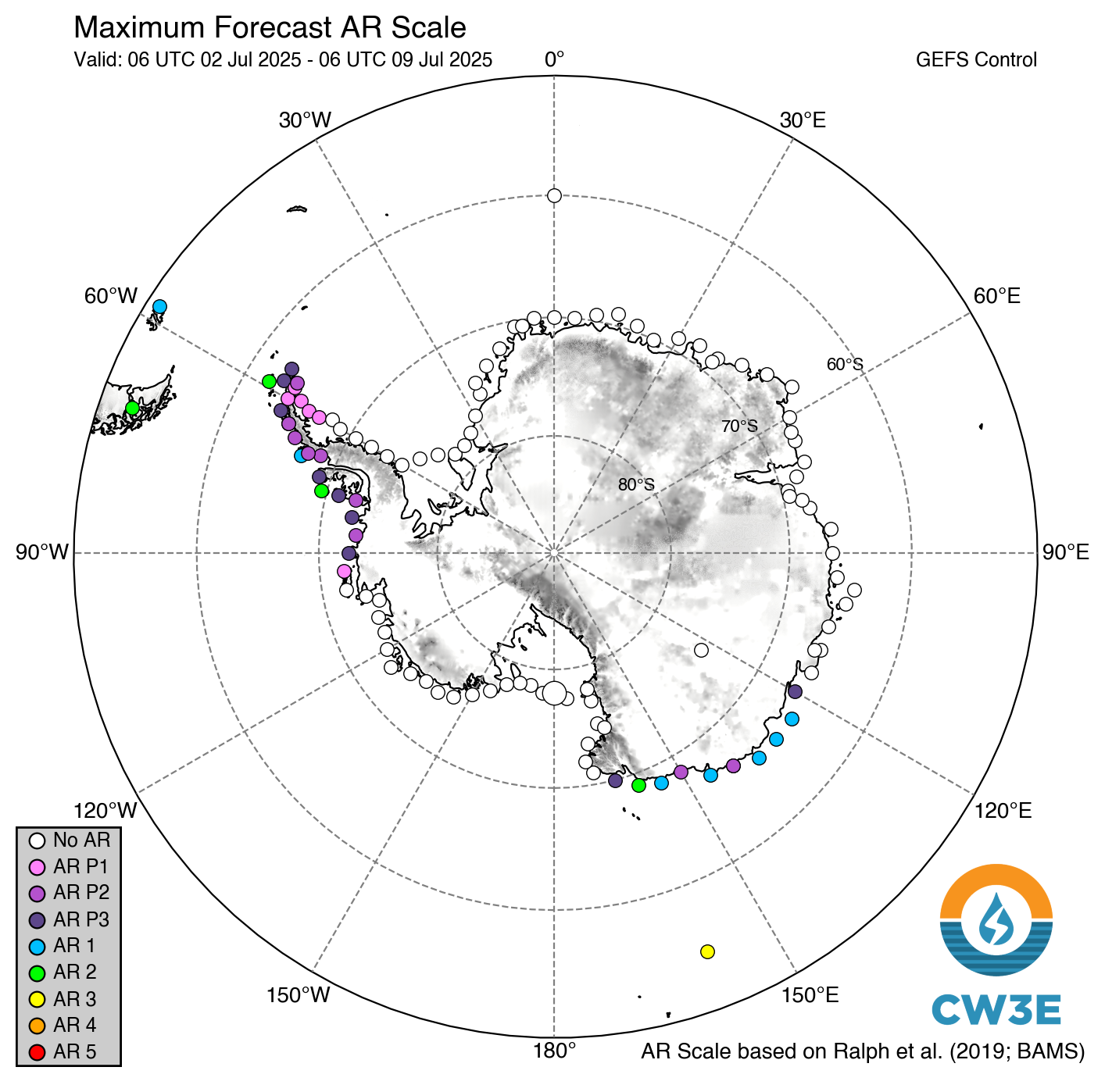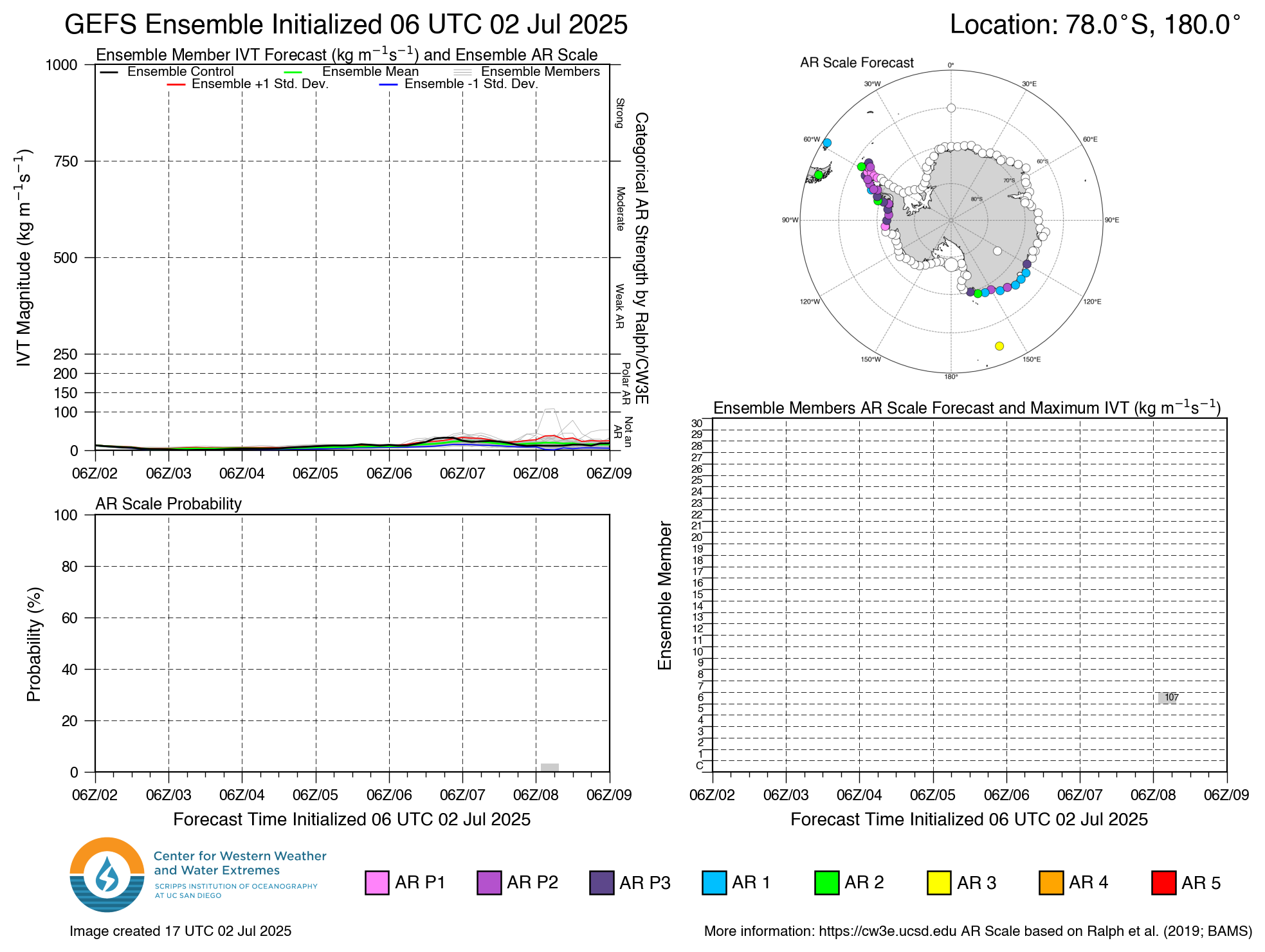Antarctic Atmospheric River Scale Toolkit
The AR scale was initially designed for utilization mainly in the mid-latitudes. Products on this page utilize an adapted version of the original AR Scale with additional IVT thresholds based on a climatological study of IVT over the Antarctic region to account for lower water vapor transport. Three additional AR rankings (AR A1, AR A2, and AR A3) have been added to the scale. The Antarctic AR scale is determined based on the duration of AR conditions (IVT >100 kg m-1 s-1) and maximum IVT during the AR, the same methodology as described in Ralph et al. 2019, but with lower thresholds added. All description videos on this page are based on the original AR Scale. For a description of the original AR Scale view the video below.
Ensemble Forecast Systems
Coastal Maximum AR Scale and Precipitation Maps
The dots on the maps below represent the AR scale observed and forecast at each grid point.
For more information on this product click here to view an overview video.
|
Location: |
Show Precipitation: |
|
 |

|
The map on the left shows the AR scale forecasted over the next 7 days from the ensemble mean or control forecast at each dotted location. The largest dot represents the chosen location for the middle and right plots.
The plot on the right shows where each identified AR falls on the AR Scale matrix and how the AR scale is calculated, identified by letters at the top of each AR in the center diagram. Time periods where IVT >100 kg m-1 s-1 but less than 150 kg m-1 s-1 and the duration is less than 24 hours will be represented by gray shading in the center diagram and ◯’s for time periods in the analysis (ie observed) period and X’s for time periods in the forecast on the right plot.
The plume diagram (center) represents the integrated water vapor transport (IVT) and AR scale analysis (ie observed) and forecast.
- The left side of each plot (red date labels) represents the observed (i.e. the 0-hour analysis of the control forecast) for the previous 7 days.
- The right side of each plot (blue date labels) represents each of the individual ensemble models (thin gray lines), the unperturbed GFS control forecast (black line), the ensemble mean (green line), and plus or minus one standard deviation from the ensemble mean (red line (+), blue line (-), and gray shading).
- Colored shading represents the AR scale observed or forecast for the given time, shaded according to scale, calculated using the control forecast or ensemble mean.
- At the top of the diagram each identified AR is given a letter representation (used on the right plot) and the maximum IVT during the AR (kg m-1 s-1), the AR duration (hours), and time integrated IVT (107 kg m-1) during the AR are shown.
- Note that if an AR is currently being observed at the given location (AR shading over the center line), the AR Scale is calculated using a combination of analysis and forecast data.
For more information on this product click here to view an overview video.
 |
 |
 |
Top left: The plume diagram represents the integrated water vapor transport (IVT) forecast for each of the individual ensemble models (thin gray lines), the unperturbed GFS control forecast (black line), the ensemble mean (green line), and plus or minus one standard deviation from the ensemble mean (red line (+), blue line (-), and gray shading). Colored shading represents the AR scale forecast for the given time, shaded according to scale, calculated using the model control forecast. Bottom left: Shading represents the probability of AR Scale conditions at the given location calculated by the number of ensemble members predicting a given AR Scale at each forecast lead time. Top right: Dots on the map represent the maximum AR Scale forecast from the GFS control member at that grid point for the next seven days. Colored shading represents the GFS 7-day accumulated precipitation forecast. The enlarged dot indicates the location the other plots in this diagram are representative of. Bottom right: AR Scale magnitude and timing calculated for each GEFS ensemble member shaded according to scale. Values in shading represent the magnitude and timing of maximum IVT during each forecasted AR. Gray shading in each panel represents IVT >100 (kg m-1s-1) for a duration less than 24 hours.
For more information on this product click here to view an overview video.
|
Transect Location: |

Global Forecast System IVT and IWV Forecasts
Plot Description: Vertically Integrated Water Vapor Transport (IVT) with magnitude shaded in units of kg m-1 s-1, direction indicated by vectors and mean sea level pressure contoured in hPa. Integrated water vapor (IWV) with magnitude shaded in units of mm, 850-hPa wind vectors, and mean sea level pressure contoured in hPa from the Global Forecast System (GFS) and the Weather Research & Forecasting Model (WRF).

